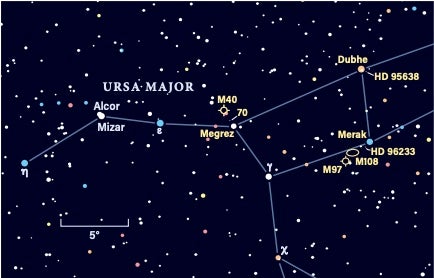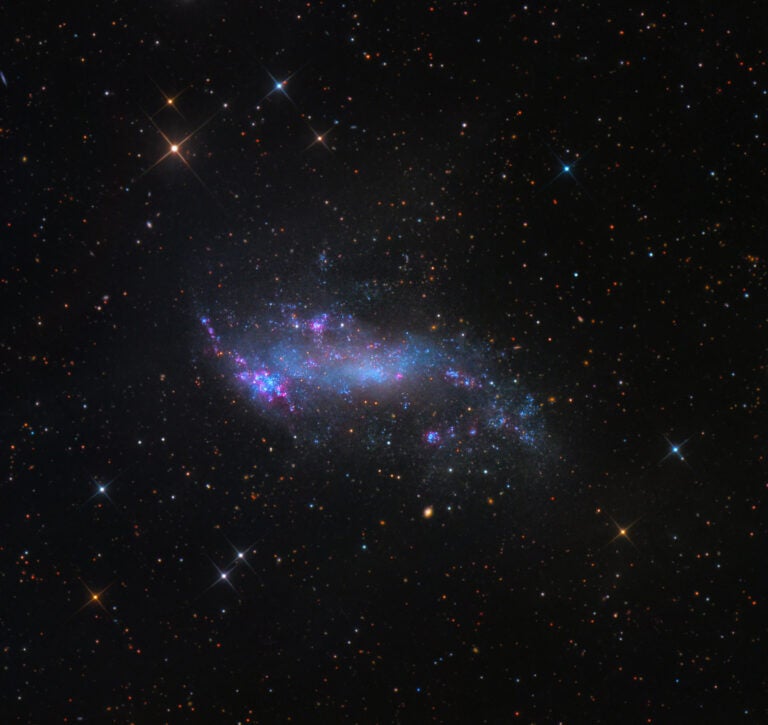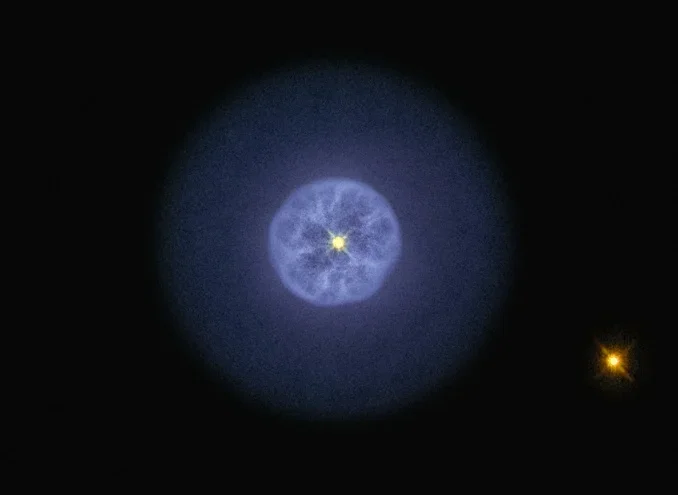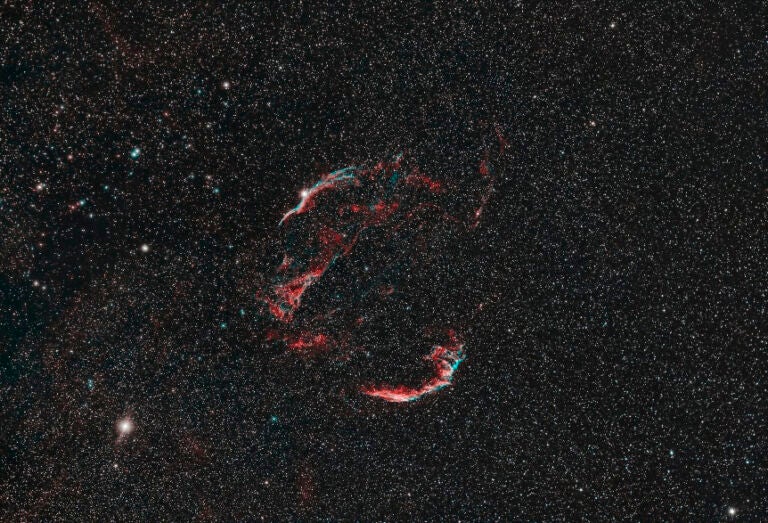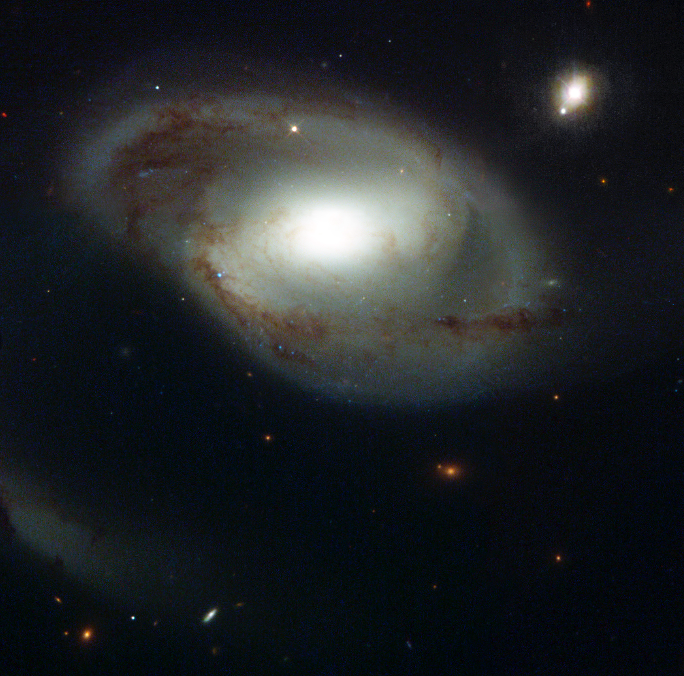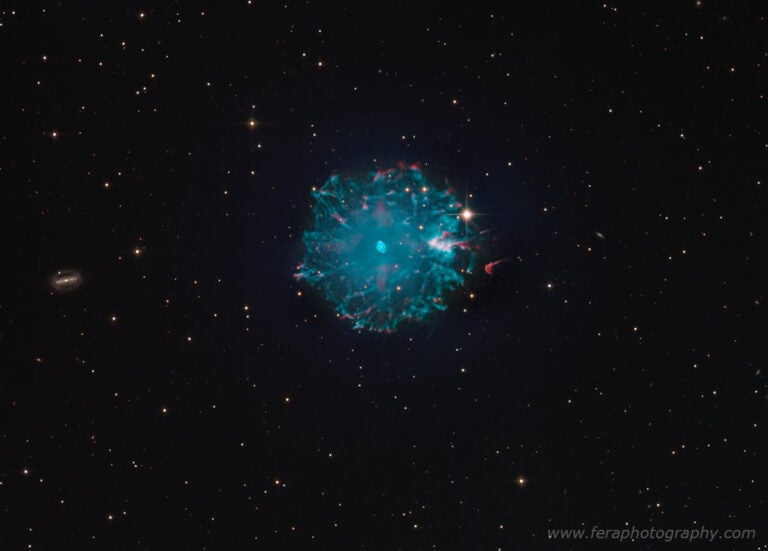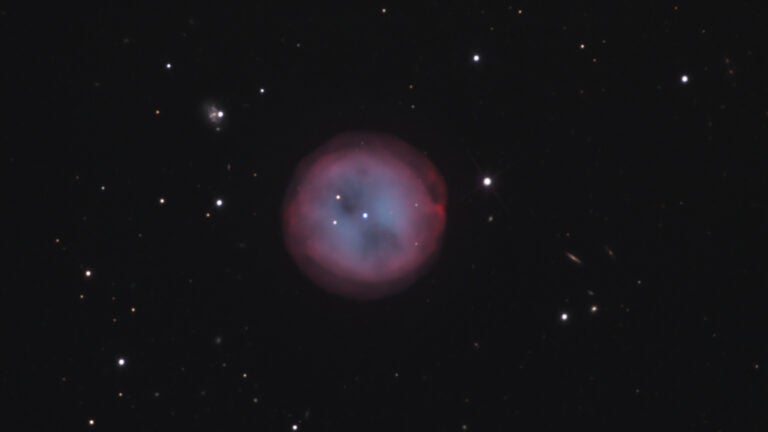High in the northern sky this month, we find the best-known pattern of stars in the sky: the Big Dipper. Perhaps spotting it for the first time earned you a scout merit badge. Or maybe, like me, you traced its pattern in the sky during an astronomy unit in grade school. Regardless, pretty much everyone living north of the equator has seen the Big Dipper. But have you uncovered everything it has to offer?
There are several hidden riches buried in and around the Dipper’s bowl. Let’s begin with Dubhe (Alpha [α] Ursae Majoris). Despite its Alpha designation, Dubhe is the second-brightest star in Ursa Major. Raise your binoculars its way and you will see that it is joined by a 7th-magnitude companion sun, HD 95638, to its south. Both lie about the same distance from Earth, some 125 light-years. While many sources list them as a binary pair, they may not actually be close enough to be gravitationally bound. Both are spectroscopic binaries, however.
For those who enjoy a challenge, this month I have three Messier objects for you.
First up, shift your aim from Dubhe to Megrez (Delta [δ] Ursae Majoris), at the bowl’s northeast corner. Our target, M40, is hiding in the same field of view.
M40 is unlike any other entry in Charles Messier’s catalog. While most of the 109 entries are star clusters, nebulae, or galaxies, M40 is an optical double star — two stars widely separated in space that just happen to lie along the same line of sight from Earth.
So, why did Messier include a pair of stars in his catalog of comet lookalikes? The confusion started in 1660, when German astronomer Johannes Hevelius recorded seeing a “nebula above the back” of Ursa Major. Messier searched for Hevelius’ nebula but came away empty-handed — at least with respect to that particular target. He did find a pair of faint stars, which became M40.
Nearly 100 years later, Russian astronomer Friedrich Winnecke independently found the same double star, adding it as the fourth listing in his double star catalog. That’s why you may also see M40 referred to as Winnecke 4.
With dark skies, I have been able to resolve the two stars in 10×50 binoculars, but with effort. To find them, aim toward Megrez and shift your attention 1° to the northeast, to 6th-magnitude 70 Ursae Majoris. M40 is just a quarter-degree farther northeast. At low magnification, M40 does appear slightly nebulous, which is maybe what Hevelius saw in the first place.
Now, transfer your attention to Merak (Beta [β] Ursae Majoris), at the bowl’s southwest corner. We will use Merak as our starting point to the last two challenging Messier objects.
First, try your luck with the edge-on barred spiral galaxy M108. Holding steady on Merak, shift your attention 44′ southeast to 7th-magnitude HD 96233 and then another 35′ to a widespread pair of 9th-magnitude stars. M108 is just east of those stars. You will need pristine conditions, but through binoculars M108 will look like a faint cigar-shaped glow barely visible against the background sky. Your best chance at spotting it is to first secure your binoculars to a separate mount rather than supporting them by hand. Although I have spotted M108 in my 10x50s, it is much easier to identify in my 16x70s and certainly with my 25x100s.
Our final target this month is the planetary nebula M97, known as the Owl Nebula. The Owl is perched 48′ southeast of M108, beyond a 7th-magnitude star that lies halfway between the two. I have also spotted its gray sphere through my 10x50s under dark skies, but like M108, its surface contrast against the background sky is very low. Use all the tricks at your disposal to see it: Try using averted vision and tapping the barrels lightly once aimed its way. The slight motion sometimes reveals a dim object that is otherwise invisible.
Have a favorite binocular target? Let me know about it, so I can feature it in a future column. Contact me through my website, philharrington.net. Until next month, remember that two eyes are better than one.

